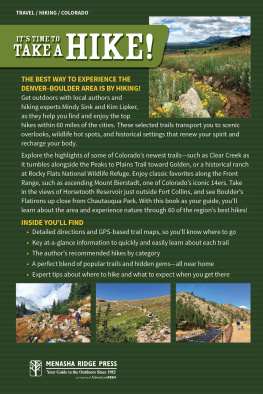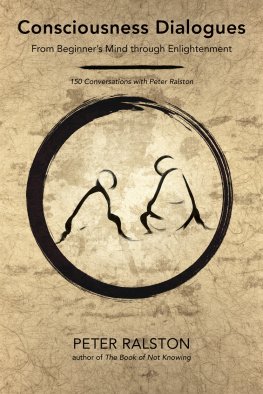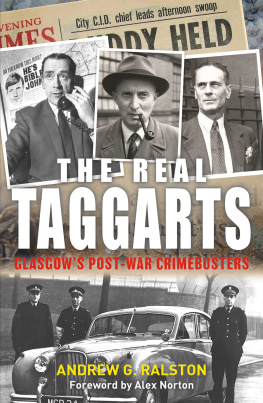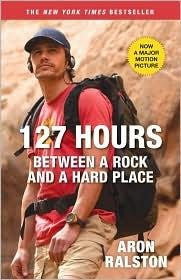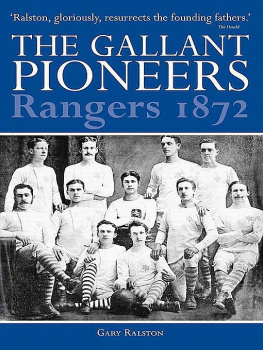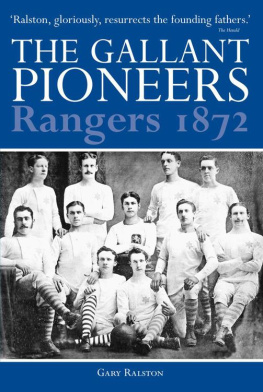

1230 Avenue of the Americas
New York, NY 10020
Copyright 2004 by Aron Ralston
All rights reserved, including the right to reproduce this book or portions thereof in any form whatsoever.
For information address Atria Books, 1230 Avenue of the Americas, New York, NY 10020
ISBN-13: 978-1-4165-0510-5
ISBN-10: 1-4165-0510-5
First Atria Books hardcover edition September 2004
ATRIA BOOKS is a trademark of Simon & Schuster, Inc.
Designed by Helene Berinsky
Credits for insert 1: pg. 1 courtesy of Elias Fallon; all photographs appearing on pg. 2 of insert, as well as pg. 3 (top and bottom right) are courtesy of the Ralston family; pg. 4 (bottom right) courtesy of Howard Huang.
Credits for insert 2: pg. 2 (top) courtesy of Kristi Moore; pg. 3 (top and bottom) courtesy of Greg Funk; pg. 7 (top) courtesy of Eric Meijer; pg. 7 (bottom) courtesy of Ron Elberger; pg. 8 courtesy of Tony Angelis.
All other photographs are courtesy of Aron Ralston.
Maps by Guenter Vollath
Visit us on the World Wide Web:
http://www.SimonSays.com
Passion: That which I suffer, allow, endure, is done to me.
But once your crew has rowed you past the Sirens
a choice of routes is yours. I cannot advise you
which to take, or lead you through it all
you must decide for yourself
but I can tell you the ways of either course.
On one side beetling cliffs shoot up, and against them
pound the huge roaring breakers of blue-eyed Amphitrite
the Clashing Rocks theyre called by all the blissful gods.
No ship of men has ever approached and slipped past
always some disasterbig timbers and sailors corpses
whirled away by the waves and lethal blasts of fire.
On the other side loom two enormous crags
One thrusts into the vaulting sky its jagged peak,
hooded round with a dark cloud that never leaves
And halfway up that cliffside stands a fog-bound cavern
gaping west toward Erebus, realm of death and darkness
past it, great Odysseus, you should steer your ship.
Scylla lurks inside itthe yelping horror,
yelping, no louder than any suckling pup
but shes a grisly monster, I assure you.
She has twelve legs, all writhing, dangling down
and six long swaying necks, a hideous head on each,
each head barbed with a triple row of fangs, thickset,
packed tightand armed to the hilt with black death!
with each of her six heads she snatches up
a man from the dark-prowed craft and whisks him off.
The other crag is loweryou will see, Odysseus
Atop it a great fig-tree rises, shaggy with leaves;
beneath it awesome Charybdis gulps the dark water down.
Three times a day she vomits it up, three times she gulps it down,
that terror! Dont be there when the whirlpool swallows down
not even the earthquake god could save you from disaster.
No, hug Scyllas cragsail on past hertop speed!
Better by far to lose six men and keep your ship
than lose your entire crew.
HOMER, The Odyssey


Prologue:
Circulating with the
Robbers Roosters
He was a better boatman than a cowboy, and a better cook than a train robber, but John Griffith, with the distinguishing mark of one blue eye and one brown eye, became a favored extra hand with the Wild Bunch, Butch Cassidys gang, during his time in the Robbers Roost country of eastern Utah. Blue John, as his first employer called him, found entry into the area as a cook for the Harris cattle operation near Cisco, about sixty miles west of Grand Junction. After fewer than two years of legitimate work, the thirty-five-year-old fell in with Jim Wall, alias Silver Tip, and Indian Ed Newcomb on a cattle roundup for the 3B outfit in the spring of 1890. The 3B herd ranged the Roost under the infamous foreman Jack Moore, who proffered hospitality to the Wild Bunch during their frequent gatherings in that country bounded by the Dirty Devil, San Rafael, Green, and Colorado rivers. Sometimes dropping into the Roost for the entire winter, to set up a base camp prior to or after a raid, or to help with the 3B stock, the Bunch always had a welcome in the Roost.
Silver Tip, Blue John, and Indian Ed circulated with the Bunch as a trio of second-tier accomplices, contributing their skills to whatever was in the works, be it horse thievery, robbery, or wrangling. In 1898 they helped Moore rope in the remaining 3B cattle of J. B. Buhrs failing operation before they left for a horse-rustling escapade in Wyoming. The return trip cost Moore his life in a shoot-out. Early the next year, as the group returned to the Roost after delivering the stolen horses to Colorado for sale, Silver Tip, Indian Ed, and Blue John lifted another batch of the countrys choicest horseflesh from ranches around Moab and Monticello. Not that the Wild Bunch boys paid much attention to posseswho were careful not to get too close to the Roost in generalbut the outlaws knew that the law was after them for this most recent spree.
In a side canyon of Roost Canyon, on a late February morning, Indian Ed climbed across the rocks below the overhang where the team had spent the night with their cache of stolen goodstwo pack animals and a half-dozen head of horses. Suddenly, a rifle shot split open the morning stillness, the .38.55 slug flattening against a rock before ricocheting to pierce Eds leg above the knee. He dropped to the sandy wash and crawled behind brush to the alcove where Blue John and Silver Tip were exchanging fire with the posse who had found the outlaws via their tracks and evening campfire. Blue John kept the posse engaged while Silver Tip sneaked out from the alcove and climbed to the canyon rim, where he put three shots just over the heads of the sheriffs men. The posse bolted back down the main wash of Roost Canyon to their horses and fled at full speed to their ranches and homes with a tall tale of their shoot-out with the Wild Bunch.
It was the last time the three bandits worked together or participated in any outlawry. They hung up their rifles and changed their ways, each peaceably fading into history after shaking things up, leaving their trails for others to follow. Indian Ed Newcomb healed his leg and was thought to have returned to Oklahoma, disappearing into obscurity. Silver Tip escaped from custody after serving two years of a ten-year sentence in Wayne County, Utah; he eventually settled in Wyoming to quietly pass the rest of his days. Blue John Griffith was last spotted in the fall of 1899, departing Hite on the Colorado River, heading for Lees Ferry down one of the most beautiful and intimidating stretches of river in the West. While it is speculated that he quit the river along the way to head for Arizona or even Mexico, he was not seen to arrive at Lees Ferry and was never heard from again.
Of the three, only one left a permanent mark on the land. Blue John Canyon and Blue John Springs, across the watershed from the site of the fateful ambush attempt, are named for the sometime cook, sometime wagon driver, sometime horse thief who roamed the Roost for a decade just before the turn of the twentieth century.
Geologic Time Includes Now
This is the most beautiful place on earth.
Next page


